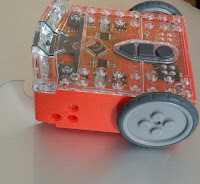Inquiry 2018
As the year draws closer and I reflect on 2017, it is time to consider what aspects of my practice I wish to work on next year. This year I completed an intervention and dissertation on mathematics; specifically using differentiated approaches to accelerate the learning of all of my students in a mixed-ability setting. I learnt so much from this intervention and it has altered much of my mathematics pedagogy and use of my class site. However, next year I would like to focus on writing, as this is another area of the curriculum that some of my learners struggle with. As I will be teaching a year 7 and 8 class, I must ensure that my teaching will support the students to transition between intermediate and high school. It is also vital that I facilitate accelerated learning so that they can cope with the literary demands of college. I would like to investigate the use of text analysis, peer and self assessment to make the connection between reading and writing explicit. ...












